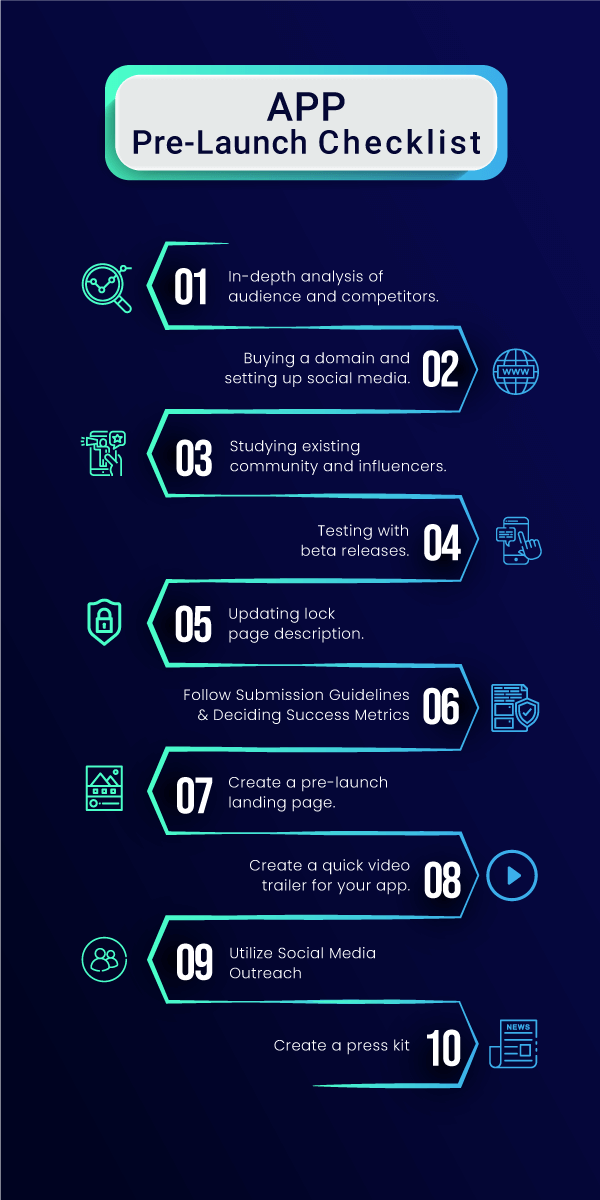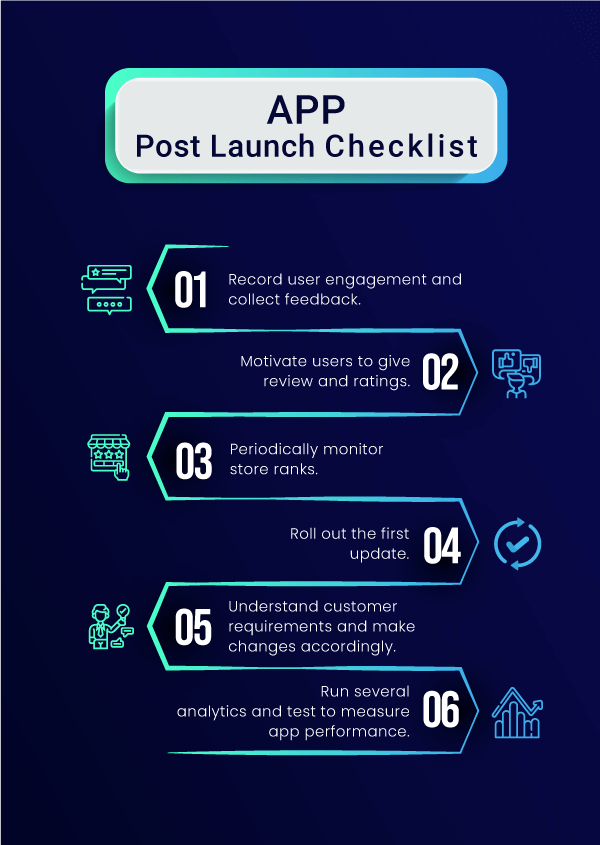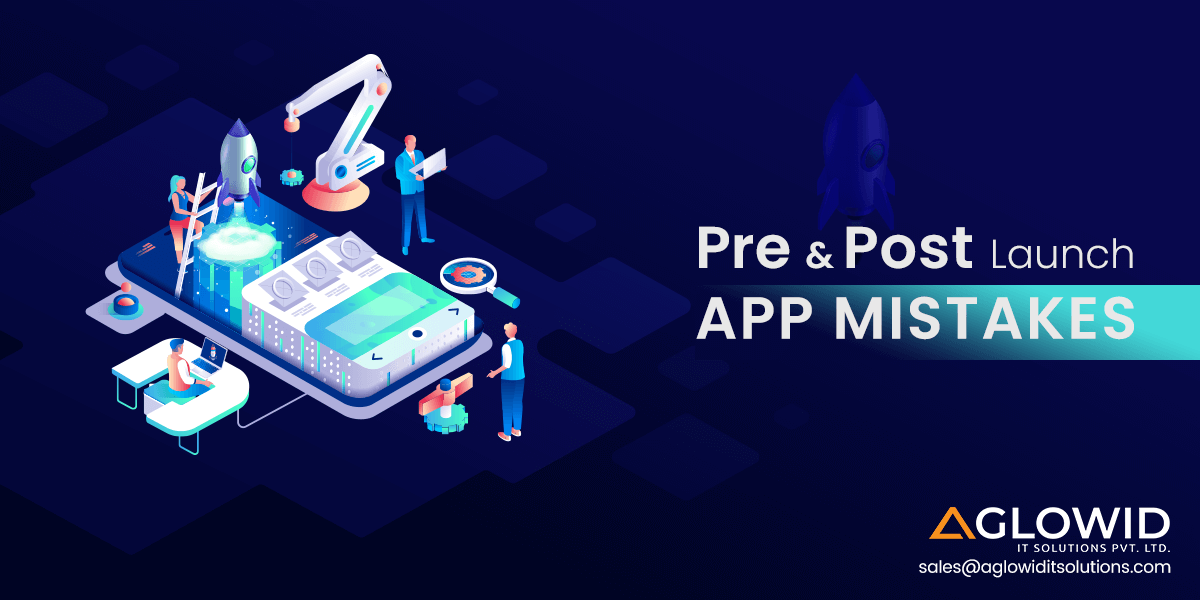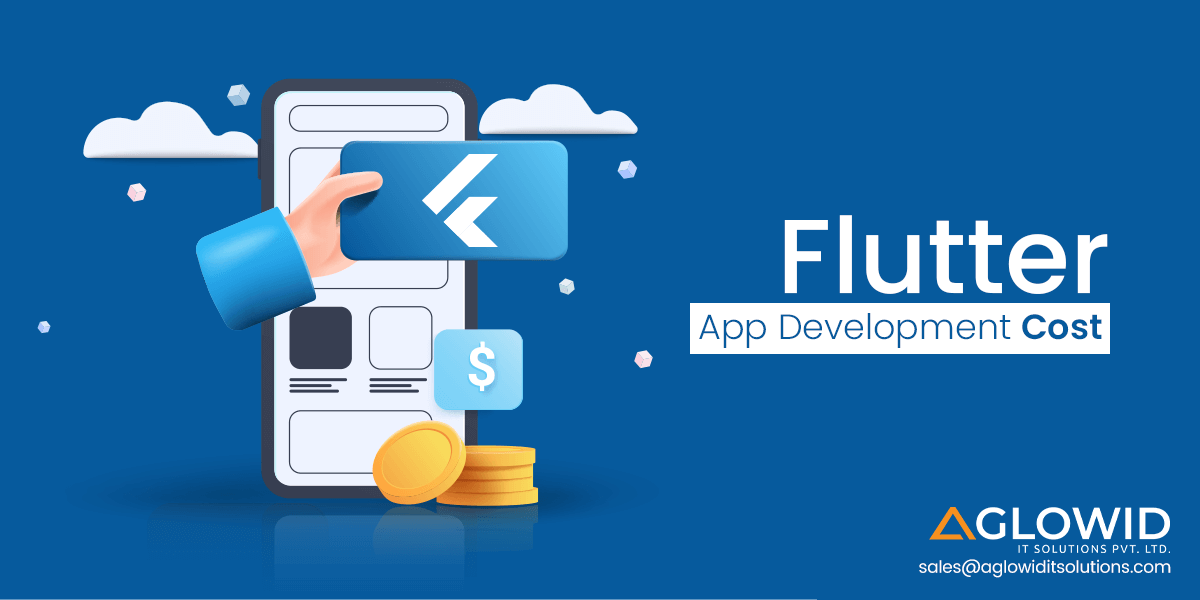It is becoming increasingly necessary to worry about things before launching an app and things to do after launching an app. Earlier, there were limited apps available on the App store. Hence the competition was relatively low, and you could easily come off as one of the top-grossing apps on the Apple Store. The App Store was launched back in 2009, and in the initial years, this was exactly the situation. There were not more than 500 or so apps in the entire App Store. Hence, chances of there being very few or no apps that belong to your niche were even higher. Back in October 2013, Apple expanded the apps on their App Store to an outstanding figure of 1 million apps. This created ground-breaking $10 billion in revenue.
It is natural and only logical that with increasing competition in the Apple App Store, the effort required to be one of the best apps in your niche will increase and so will the challenges. The same is the situation for any other major app store like Google Play Store. For this, you need a proper marketing plan for ensuring the success of any new app you launch on these popular app stores.
There are many pre-launch app mistakes and post-launch app mistakes that marketers make which affect the performance and popularity of apps on these marketplaces significantly. The success of any app isn’t limited to developing an app from the best app idea only, there are many other factors that affect how your app will perform. Two apps of similar potential and offerings can do very differently on the app stores depending on how well their pre-launch and post-launch app development checklists have been covered thoroughly. Here we will discuss some of the most common pre and post app launch mistakes so that you don’t fall victim to these blunders.
I. Pre-Launch App Mistakes
Here we will discuss the most prominent pre-launch app mistakes to avoid at all costs –
1. Skipping Beta Test
Upto 70 percent app uninstalls are because of mobile app crashes. All big tech brands engage in beta testing before launching the app. This should also be the case when launching your mobile app in popular app markets like App Store and Play Store. Most app developers and marketers skip this important process before launching their app in the market. This causes a lot of bugs and inconsistent app performance which can drive away a lot of potential customers and harm your brand image significantly.
What you should do instead?
You can prepare your app for beta testing as soon as it is almost ready for its launch. It is wise to launch the beta testing well in advance to keep a buffer time for making any necessary changes based on the feedback that you receive from the beta testing.
2. Delayed Inclusion on Marketing Team
Most app developers and mobile app development companies arrive too late at the door of marketing team to promote and plan an app marketing strategy for their app’s successful launch on popular app markets. This delay can cause a lot of confusion and lead to wasting a lot of time getting everyone on the same page and solving all confusion.
What you should do instead?
You can get your marketing team involved as soon as you are nearing app development completion or while discussing app prospects and goals as well. Doing this would help the marketing team understand the app better, and the keywords and hot topics to target for the app to lead the competition when it launches in the app stores.
An effective marketing plan should include
- A list of potential USP(Unique selling preposition)s of your app
- App Store Optimization
- App Name-
- Using app purpose in the App Name – XYZ ‘Photo Editor’.
- Using trending words and hot keywords to come up with apt app name.
- Keywords –
- Each app gets 100 characters in keyword section, plan it accordingly.
- Description –
- App List on most app stores allow first 2-3 lines of text to be visible. It is important to get your most appealing message across in this space to get potential customers interested in your app.
3. Not Planning on the App Launch Date
Many marketers take care of every other thing you can think of with app launches, however they fail to pay enough attention to ‘when’ to launch their apps on the app market places. If you launch your app in the app market when a leading established company releases their app in your niche, your app would barely get the limelight and recognition it needs to grow and become popular. Or another instance can be launching an app on a day where people are busy with some other important event globally or locally where your app is targeted.
What you should do instead?
Consider few important factors before deciding on your app launch date. Plan your app launch date well in advance keeping in mind the technological advancements and the ongoing trends, ensure your app gets proper media coverage and other efforts to ensure your app doesn’t get lost in the crowd and gets the initial attention required for getting a decent boost.
4. Not keeping a track of guidelines on various app stores
Any app marketplace – big or small has a set of rules and guidelines for developers to adhere to in order to submit their app on these platforms. Many developers don’t factor this into consideration and make an app and submit it to these platforms which then rejects them. Or, they worry about it after they are halfway through the app development stage and then try to make necessary changes to adhere to these guidelines which can be an expensive app launch mistakes no one wants to commit.
What you should do instead?
Before launching your app on the app stores, make sure to go through their guidelines thoroughly and implement those guidelines in your app from the beginning of your app development process, this will ensure a successful app launch.
5. Not optimizing your mobile application for App Store Search
To the rank of Apple app store or even Google play store, there are certain considerations you need to keep in mind and include in your pre-launch marketing efforts. Most marketers and developers overlook these important considerations, which negatively impact their ranking compared to their competitors.
What you should do instead?
- Ensure proper keyword usage in the name/description spaces.
- Use the best-fitted visuals and branding for the app.
- Create a landing page to promote your app.
- Not installing App Analytics SDK
6. Not focusing on Analytics SDK
To understand how your app will perform once it is launched in the marketplaces, you need to have a pre-installed analytics SDK to record and translate all that data to understandable stats and figures. Many developers skip this or forget about doing this before launching their app on the marketplaces. Doing so after launching your app will not give you a complete picture of the initial activity and performance of the app, which can be crucial to make corrective changes from the beginning.
What you should do instead?
- Find the best analytic tool that suits your requirements.
- Pick KPIs that your target audience relates to.
- Track performance and make necessary changes.
- Understand user behaviour and engage them further with tailored campaigns.
App Pre-Launch Checklist
- In-depth analysis of audience and competitors.
- Buying a domain and setting up social media.
- Studying existing community and influencers.
- Testing with beta releases.
- Updating lock page description.
- Going through submission guidelines and establishing success metrics.
- Create a pre-launch landing page to create buzz about your app.
- Create a quick video trailer for your app.
- Take up social media accounts on all necessary platforms.
- Create a press kit

II. Post-Launch App Mistakes
Here we will discuss the most prominent post launch app mistakes to avoid at all costs –
1. Over spamming your users with Push Notifications
Push Notifications are an effective channel of reminding your users to open your app again and engage with it in some form or the other. However, marketers often get too greedy with this and keep bombarding their users with push notifications every other hour or so.
According to the survey, receiving between 2 and 5 messages in one week would cause 46% of respondents to disable push notifications. 32% of respondents said they would stop using the app altogether if they received between 6 and 10 messages in a week’s time.
This would naturally start bugging your customers, and they won’t flinch once before uninstalling your app, irrespective of how good it is. Push Notifications though an effective medium of marketing, are still obtrusive in nature. They take away the users attention from what they’re doing and demands their attention to be redirected towards your app. If this gets too frequent it is natural for them to write your app off a spam and get rid of it.
What you should do instead?
Well, don’t blind shoot your push notifications to your customers and piss them off, instead plan your push notifications carefully and always allow the users the option to turn off push notifications easily if they want. Also ensure that you are thinking about time zones before sending push notifications.
2. Under-utilizing your App’s Update Description space for marketing
Just as a fresh Instagram account or Facebook profile looks deceitful so does an app on the App Store with no description. It confuses and raises a sense of doubt among potential users. If an average smartphone user has 25 apps downloaded at a single time in their phone, they won’t go through every app on the update list to update them all. If your app update description only reads ‘bugs fixes’ it is barely going to attract users to update your app as it barely provides any value to them.
What you should do instead?
Compared to this, when marketers use this App Update Description space to market their apps better, it attracts the attention of the users and gets them excited to update the app for all the benefits and value addition they’d get with the update.
3. Not paying required attention to Customer Support
Your app might have thousands or even millions of downloads. You set this as a benchmark and milestone for measuring your mobile app success and feel happy about the results. However, in a competitive market, every user of your app needs to be treated with care and proper attention.
In recent study, 95% of respondents said they usually tell at least one other person about a bad customer experiences with a company, while 54% said they share it with at least 5 other people.
If you fail and resolving or even acknowledging the complains your users have with your apps, they could negatively talk about your app to their friends and so forth and so on, leading to a downfall in overall reputation of your app.
What you should do instead?
You never know some of these customer inputs might be valuable ideas too for improving your apps. Hence paying attention to customer support is very crucial even after you launch your app in the market.
4. Struggling with the right balance between Not Measuring anything or Over-Measuring everything.
Most marketers or app companies judge the success of their app based on the revenue it generates for the company. While it’s understandable to consider overall revenue as a yardstick for any app’s success, it cannot be the only indicator. Overall revenues don’t even guarantee sustained gains.
What you should do instead?
Your aim is not to earn a high amount of profit for a short interval and then declining in your profits or even start incurring losses. For ensuring you don’t fall victim to this, you need to focus on questions like –
- Which particular features are drawing your customers in?
- Is there a specific section where people are opting out of your app?
- How many people are using your app on a daily basis?
Some measures you should be focusing on to get more holistic view of your app revenue and success are –
- DAU/MAU – Daily and Monthly Active Users.
- Retention Rate – Periodic retention rates should be measured.
- APRU – Average Retention Per User.
- Life Time Value of your Mobile Application.
5. Discarding the importance of User Engagement and Retention
Most marketers or app development companies have a lot of money to spend and play around with. While paid customer acquisition is not bad or inefficient, it should still not be your top marketing strategy. You might want to get the initial downloads a boost with paid promotions but in the long run if you want your users to stay with your app and be genuinely interested in your offerings, you need to focus on engagement and retention.
According to market surveys the engagement rate dips from 91% in the first day to 31% in the seventh day. In fact, only 7.5% of users engage with new apps after the first month.
So you have to focus on that Otherwise, you will begin to notice users dropping off from your app soon enough.
What you should do instead?
Find the right paid channels for your apps and use them with other marketing strategies and not focus solely on paid promotions. Focus more on creative ways to enhance user engagement and retention.
6. Not putting efforts in your App Review Request Emails
When it comes to fashion, cars or any other niche, there are always a group of individuals who influence the customer’s decisions majorly as to what’s new and what’s relevant.
In the recent study found that 88% of respondents have been influenced by an online review when making a buying decision.
Same is the case with mobile apps. There are experts and dedicated professionals who know about certain type of apps and can give credible feedback regarding the same. If they find your app worth sharing with their dedicated following, it can boost your app sales and downloads by many folds. It also helps customers get a sense of assurance that the app is safe. Many marketers seem to forsake this effort and send app reviewers a mundane and repetitive mail for review request.
What you should do instead?
Now these app reviewers are swamped with such requests by many apps, and they don’t have the time or energy to go through each of them, or entertain each request. Hence, it is imperative for you to write a strong copy for your app review request, get them interested and win their trust that your app is different and worth talking about to their following.
A good app review request email should have –
- A video of your app.
- A link to your app on the App Store/Google Play Store.
- App Press Kit.
7. Poorly strategized Monetization Models
Why do you build an app? To make money off it, of course. An app serves many purpose, but there are no app development companies that don’t wish to earn out of their apps. Making money from your app can be challenging. Many companies often forsake all pricing strategies and focus on competitive pricing to an extent, that they provide their apps at watered down prices to stay ahead of competition but end up undervaluing their services at the same time. For instance, a customer probably wouldn’t mind a $2 discount for a service that costs around $4 to begin with.
What you should do instead?
Instead of blindly shooting different pricing techniques and strategies, you should better focus on studying the market and your audience to understand what kind of pricing will best suit their requirements, purchasing intention and capacity.
App Post Launch Checklist
- Record user engagement and collect feedback.
- Motivate users to give review and ratings.
- Periodically monitor store ranks.
- Roll out the first update.
- Understand customer requirements and make changes accordingly.
- Run several analytics and test to measure app performance.

Wrapping it up!
These are some of the most common mistakes marketers and app developers make while launching their apps on the app stores. You should avoid making these pre and post app launch mistakes at all costs as they can cause significant impact on your app popularity, downloads or success. Make sure to be thorough with all these points to ensure your app has a longer shelf life.
Also Check:





 Say
Say